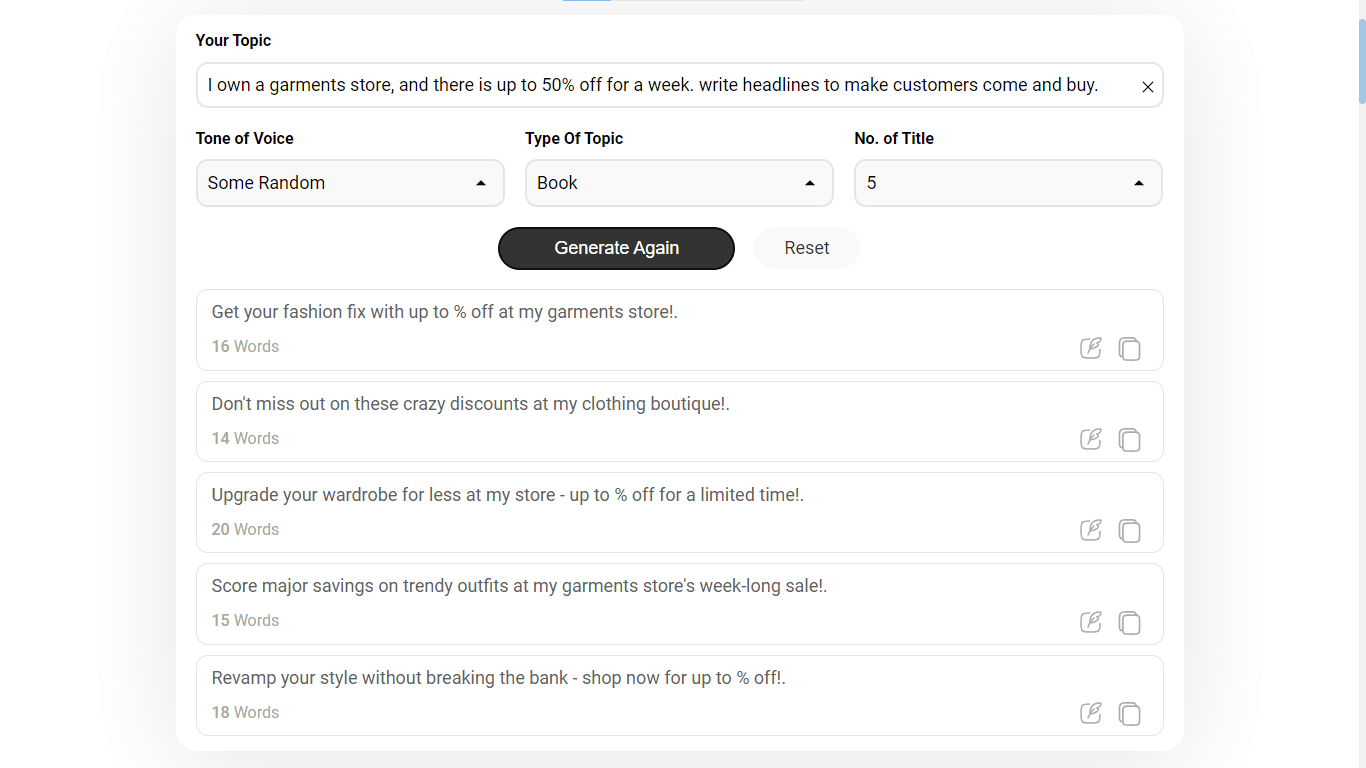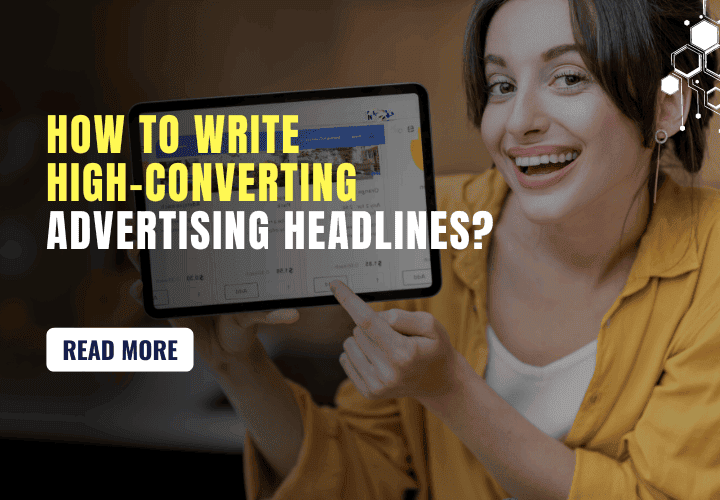How to Write High-Converting Advertising Headlines?
Recently updated: September 19th, 2024
The first impression is the last impression. You probably believe this statement, right? The same applies to headlines. David Ogilvy, a famous advertising executive, said that people read headlines five times more than the body copy.
When you search for something online, open a website page, or see an online ad, the first thing that you see is a headline. Right? Therefore, we must focus 80% of our attention on writing a quality ad headline that attracts customers.
But how can someone write high-converting advertising headlines? From knowing your audience to adding numbers to creating a sense of scarcity, many tips and tricks are included in the process.
Read on to explore them all!
Know Your Audience Needs
The first thing every marketer does is know their targeted audience when writing an ad headline. Here, you have to know what they really want, i.e., the type of product or solution and what triggers their interest.
For this, you can analyze the keywords they are using to find the product and note down the common characteristics.
If your customers are looking for ‘affordable shoes’ or ‘footwear on sale’, you have to consider this when writing a headline. Add terms that show products are affordable, such as ‘50% off, ‘prices are down’, etc.
Be More Like a Relevant Solution
Do you know what your audience is looking for? What are their pain points? If so, present yourself as a reliable, relevant solution. Use the Pain-Agitate-Solution (PAS) copywriting formulae to solve your customer’s problem.
The Pain-Agitate-Solution (PAS) formula identifies and addresses the pain points of a target audience and focuses on creating solutions to their problems. Since we already know our customers’ needs, present their solution.
There are many ways to present yourself as a suitable solution, such as:
| Method 1: Ask a question that addresses the customer’s common pain point/struggle. Make them find out the answer. For Example: “Struggling with weight loss? Not anymore!” |
| Method 2: Directly focus on the benefit/solution. If you choose this format, you can either mention the problem, too, or not—it’s all up to you! For Example: “Double Your Productivity in Just 10 Minutes a Day.” |
| Method 3: Highlight social proof or testimonials. Show that others have successfully solved their problems with your product or service. This builds trust and positions your offering as a proven solution. For Example: “Join 10,000+ Satisfied Customers Who Lost Weight with Our Program!” |
| Method 4: Promise a transformation or outcome. Speak directly to the desired change or end result that your audience is seeking. This method keeps the focus on the positive outcome of using your product or service. For Example: “Transform Your Skin in 7 Days with Our Natural Formula” |
| Method 5: Emphasize unique selling points (USPs). Focus on what makes your solution different or better than others. Highlight unique features or benefits that specifically address your audience’s needs, which they can’t easily find elsewhere. For Example: “Get Faster Results with Our Exclusive 3-Step Weight Loss Formula” |
Add Numbers and Lists
A red car always gets more attention on the road. Why? The streets are normally crowded with cars in common colors, such as white, black, silver, etc. And when a unique ‘red’ color arrives, it catches attention naturally.
The same applies to the number and lists in an ad heading, whether Google Ads, landing page, or Facebook Ads headline. Instead of plain linguistic text, add numbers into the headings to make them eye-catching.
Below, we have written heading samples with and without numbers in them. Compare both formats and try to observe how numbers make a difference.
| Headings (without numbers) | Headings (with numbers) |
| “Increase Your Profit In a Month” | “Increase Your Profit by 23% in 30 Days” |
| “BizBoost: Trusted By Many Business Owners” | “BizBoost: Trusted By 20K Business Owners” |
| – | “Would an Extra $5K/Mo Change Your Life?” |
| “Increase Your Sales” | “Increase Your Sales by 50%.” |
| “Tips to Improve Your Health” | “5 Tips to Improve Your Health” |
Use Strong Verbs and Power Words
Sell the emotions, not the facts. This is a famous sales strategy, also called emotional selling, in which powerful words, evocative language, and persuasive techniques are used to evoke emotions and make them buy products.
So, when writing an ad headline, don’t forget to incorporate strong verbs and power words into the headings. After all, you won’t want to miss the magic of emotions and their power to give you more leads, sales, and ROI.
|
Examples of power words:
|
|---|
The following are the titles we created using the above-mentioned power words:
|
|---|
Create a Sense of Urgency and Scarcity
When we talk about incorporating emotion-provoking terms in ad headings, we can’t forget to create a sense of urgency and scarcity. While emotions drive a customer to buy, a sense of urgency makes them buy ‘fast’.
Again, you have to use certain keywords, terms, and phrases in your ad headings to achieve this goal. For example, here is the list of common phrases we found:
Examples of terms/phrases to create a sense of urgency and scarcity:
|
|---|
Using the above-mentioned terms/phrases, you can generate titles like:
|
|---|
Don’t Forget to Use AI to Write Headlines
Implementing all the tips and tricks we have seen earlier to write headlines is a lot of work, effort, and time. And we can understand that.
What if we tell you that there is no need to follow all the tips? And there is an alternative yet fast way to write headlines? Well, it is Summarizer’s Title Generator. These are the steps to write headlines with this AI-based tool:
- Enter your topic or prompt into the text input box.

2. Select the tone of voice, type of topic, and number of titles you want to generate.
3. Click on the Generate button to get a list.
4. Wait 2 to 3 seconds and let the tool generate headlines for you.
The resulting window looks like this:

Review all the headings generated by the tool. Pick one or two that best resonate with your targeted audience. In the end, work on them to improve further. In the end, choose and use the one that feels the best.
What We Learnt So Far?
When writing high-converting advertising headlines, always know what your audience wants. Use words that address their pain points and offer solutions.
Use numbers and lists to make your headline stand out, like “Increase Your Profit by 20% in 30 Days”. Use strong verbs and power words. i.e., “discover”, “amazing”, and “exclusive”, to evoke emotions.
Create urgency with phrases like “limited time offer” or “only a few left”. Keep your headlines short and clear, ideally 5-8 words or under 30 characters. If needed, use an AI summarizer to help condense longer copies.
Latest posts by Vijaya Tyagi (see all)
How To Track Shopify SEO Performance & Metrics (2025) - January 14, 2025
Link Building Strategies: The Ultimate Techniques for 2025 - December 31, 2024

